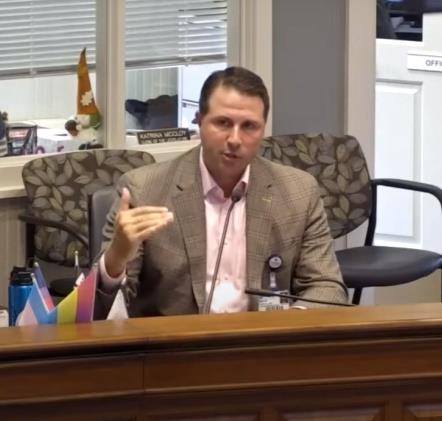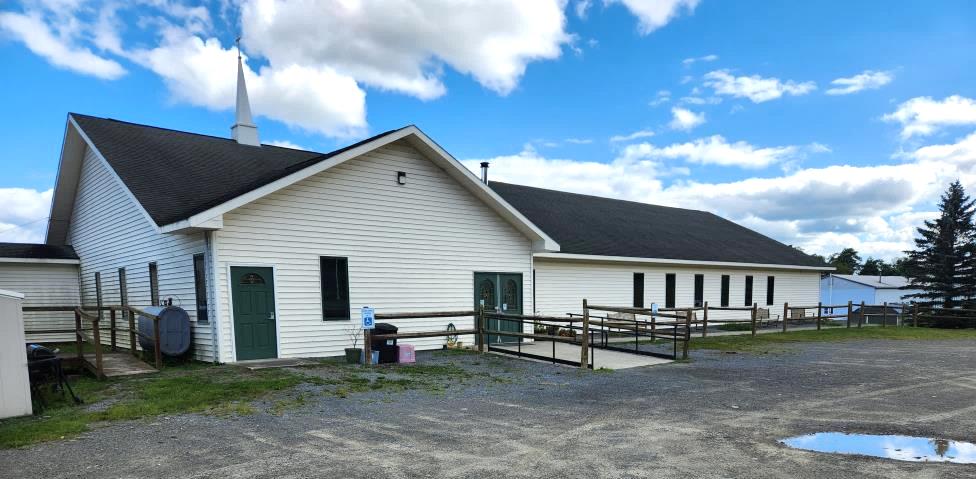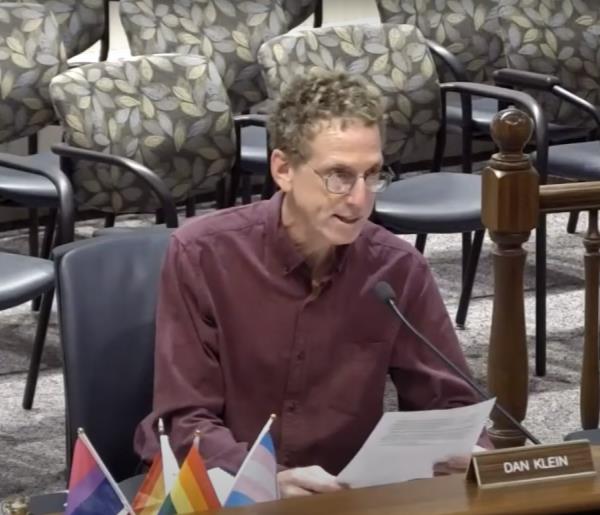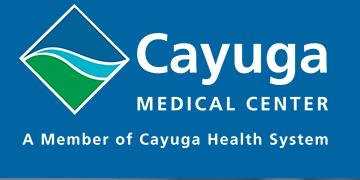NYS balks at backing the Community Recovery Fund’s top recipient
by Robert Lynch; September 20, 2023
Three Enfield agencies argued last year that the local hospital deserved funding less than they, themselves, did. But the hospital got the cash and the Enfield applicants got shut out. They’d all joined in a money grab from a well-publicized source, the Tompkins County Community Recovery Fund.

Only now, the Fund’s luckiest applicant, Cayuga Medical Center (CMC) faces troubles of a different sort. New York State regulators won’t let them build the kind of mental health treatment center they’d wanted to construct with the money awarded. And unless those regulators budge, and change their minds soon, CMC could forfeit its time-sensitive $1.5 Million Recovery Fund grant. It’s money the Enfield agencies and others might then seek to divide among themselves.
The message might have gotten lost in the densely-packed, nuance-laden presentation Cayuga Medical’s CEO, Dr. Martin Stallone, made to a Tompkins County legislative committee Monday. But that committee’s chair, Danby’s Dan Klein, got the message. Klein picked through Stallone’s wiggle-words and delivered to the full Legislature Tuesday night the hospital CEO’s bottom-line:
“As far as the planned Crisis Stabilization Center, there was not a lot to report on yet,” Klein told the Legislature, based on Stallone’s earlier assessment. “They have not been able to get the New York State approvals that they need, and they are attempting to explore options.”
“I was hoping for more solid news on their progress,’ Klein admitted, “But we will just have to wait for that.”
We must wait, but for exactly for how long? CMC’s set-aside from the Community Recovery Fund, part of a $6.5 Million pass-through to local agencies from the federally-financed American Rescue Plan, sets clear time limits for its spending. Recovery Fund Program Guidelines called for large-dollar projects, like Cayuga Medical’s, to be “obligated/awarded” by December of next year, and the funding spent by the end of 2026.
With CMC’s Crisis Stabilization Center now tied up in regulatory knots, no one can be sure whether the hospital corporation could meet those deadlines. And if this biggest recipient were to forfeit its funding, any of the also-ran applicants who’d earlier applied for the County program,—only
eventually to be denied—could renew their funding appeals.
“The County granted one-and-a-half million dollars for this project,” Klein reminded the Legislature. “So we will continue to pay close attention to how this project develops.”
The Community Recovery Fund Advisory Committee, which Klein also chairs, doesn’t meet again until November sixth.
Three Enfield applicants; the Enfield Community Council (ECC), the Enfield Volunteer Fire Company (EVFC), and Enfield Food Distribution, operator of the Enfield Food Pantry, had each applied for Community Recovery Funds last October. They’d joined some 230 other agencies, businesses, and local governments in search of support. Enfield Town Government itself was among those other hopefuls. Enfield’s only success came when the County Legislature last spring allotted the Town just over $26,000 to buy new Highway Department radios. The Town and its agencies have gotten nothing else.

When the County Legislature awarded the vast majority of Recovery Funding last December, the CMC application proved the most controversial. Newfield-Enfield legislator Randy Brown spearheaded an unsuccessful effort to exclude the Crisis Stabilization project from the recommended list. While he endorsed the project’s mission, Brown maintained Cayuga Health, a well-heeled hospital corporation, had many other funding sources to draw upon. Most competing applicants, he said, had little or no alternative funding.
On the Recovery Fund’s most-recently compiled backup list of sorts, the Enfield Fire Company ranked highest among Enfield’s so-far unsuccessful Recovery Fund aspirants, those that might become newly-eligible should others drop out. The Fire Company would use its minimum $50,000 request for a capital improvement project that could begin construction on a “bunk room,” sleeping quarters for volunteers.
Down the list a ways, the Community Council seeks a minimum $146,000 to tack a Mental Health and Community Services Wing onto its Community Center. In a much more ambitious endeavor, Enfield Food Distribution has asked the Recovery Fund for $1.1 to 1.6 Million to construct its new Enfield Food Pantry off Bostwick Road. The Recovery Fund committee zeroed-out Enfield Food Distribution early-on in its deliberations. The other two Enfield agencies initially fared better during early multiple-rounds of review, but have still to receive any County cash.
Just why New York State Mental Health bureaucrats so resist the kind of Crisis Stabilization Center CMC proposes remains unclear. And to that point, CEO Martin Stallone provided little clarity during his 30-minute, wide-ranging briefing to the County Legislature’s Health and Human Services Committee Monday, the report addressing many mental health services. In fact, Stallone’s message was so generalized, provisionalized, and laced with medical therapeutic nuance that it required a keen ear to detect that the Crisis Stabilization Center had been denied approval at all.
“All of this is in the programmatic process of being defined,” Stallone stated regarding current negotiations that impact State approval. “We’re having ongoing conversations with the Office of Mental Health, both at the state and regional level, in conjunction with Tompkins County Whole Health [the local Health Department] about the model that is available to us and dually works for what the community needs.”

“We haven’t decided on the exact model,” the hospital chief continued. “We’ve applied to an intensive crisis stabilization model and separately (to) a supportive-level model. Neither of those applications were successful with the State.”
One attempting to wade through Stallone’s camouflaged, jargon-filled, never-concede-defeat roundabout narrative might finally have shouted at this point, “Bingo! That’s it. We’ve got a problem here.”
“There is now a third model,” CMC’s CEO went on. It’s “called ‘CPEP,’ (a Comprehensive Psychiatric Evaluation Program), which is a stand-alone psychiatric emergency room.” CPEP appears to be CMC’s current offer to the State. Yet, here too, Stallone voiced caution:
“That’s (CPEP) got challenges based on the nature of existing care infrastructure in our community,” the administrator warned.
Pressed later by committee Chair Klein to explain, Stallone conceded that this third purported option is not really anything like CMC had initially asked Tompkins County to back financially.
“The third was not a Crisis Stabilization Center,” Stallone acknowledged. “It’s more intense. It’s a full-blown psychiatric emergency room.”
So, if the only thing that New York State may approve is nothing at all like what CMC sought from Tompkins County funders a year ago, would CMC lose its standing in the now-completed Community Recovery Fund awards process? That is one question that Dan Klein hasn’t posed either in committee or on the Legislature’s floor. It’s a question that deserves to be asked… and answered. And it’s a question that Martin Stallone has so far not addressed. It’s a question very clearly reserved for another day.
The CMC request, first recommended in committee and then fully-funded by the Legislature last December, directed the $1.5 Million toward an “Intensive Crisis Stabilization Center for Tompkins County,” not for a mental psychiatric emergency room, nor for anything else.

What CMC asked of the Recovery Fund was money to retrofit a piece of the Shops at Ithaca Mall for a facility that would help the hospital bridge the gap between inpatient and outpatient care for those with mental illness or substance abuse issues. A psychiatric emergency room is a much different animal. Yet it may be the only animal that Albany will approve. And common sense suggests it’s unlikely any such specialized beast would make its home in a shopping mall.
“Sometimes you need to avail yourself, if you’re an organization, of the programs that the State is encouraging, based on funding and licensure,” Stallone advised the committee. “To be clear, it’s not Crisis Stabilization. It’s a level above that.”
And perhaps a funding level far different as well. The $1.5 Million Tompkins County assigned the Crisis Stabilization Center only accounted for about 16 per cent of the project’s total cost. At the time CMC applied, it estimated the center’s total cost at over $9 Million.
****
To the most cynical among us, last year’s competition for Community Recovery funding resembled a flock of vultures picking away at a very ample carcass. And now, if CMC’s biggest-of-the-big funding award should fall through, expect that carcass to reappear. And if it does, expect the birds to return as well, including maybe a few from Enfield.
###

